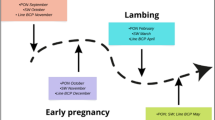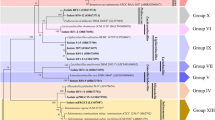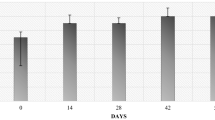Abstract
IN a previous communication1, McGaughey and Sellers stated that sheep, with permanent rumen fistulæ, fed on hay and mangolds, develop a rumen microflora similar to that described by Quin2 as occurring in sheep in South Africa. They pointed out that the organism found overwhelmingly predominant and apparently that termed Schizo-saccharomyces ovis by Quin is motile, and is apparently the same organism as that described by Woodcock and Lapage3 and now known as Selenomonas ruminantium (Certes).
This is a preview of subscription content, access via your institution
Access options
Subscribe to this journal
Receive 51 print issues and online access
$199.00 per year
only $3.90 per issue
Buy this article
- Purchase on Springer Link
- Instant access to full article PDF
Prices may be subject to local taxes which are calculated during checkout
Similar content being viewed by others
References
McGaughey, C. A., and Sellers, K. C., Nature, 161, 1014 (1948).
Qnin, J. I., Onderstepoort J. Vet. Sci., 18, 91 (1943).
Woodcock, H. M., and Lapage, G., Quart. J. Micr. Sci., 59, 431 (1943).
Ledingham, quoted by Woodcock and Lapage (see ref. 3).
Author information
Authors and Affiliations
Rights and permissions
About this article
Cite this article
INGRAM, M., MCGAUGHEY, C. Microflora of the Rumen of the Sheep. Nature 162, 533–534 (1948). https://doi.org/10.1038/162533b0
Issue Date:
DOI: https://doi.org/10.1038/162533b0
This article is cited by
-
Micromanipulation in the Examination of Rumen Bacteria
Nature (1963)
-
Studies on Alterations in the Rumen Fluid of Sheep, Especially Concerning the Microbial Composition, when Readily Available Carbohydrates Are Added to the Food IV. Identification of the Gram-Positive Flora Developing During the Feeding Experiments
Acta Veterinaria Scandinavica (1961)
Comments
By submitting a comment you agree to abide by our Terms and Community Guidelines. If you find something abusive or that does not comply with our terms or guidelines please flag it as inappropriate.



